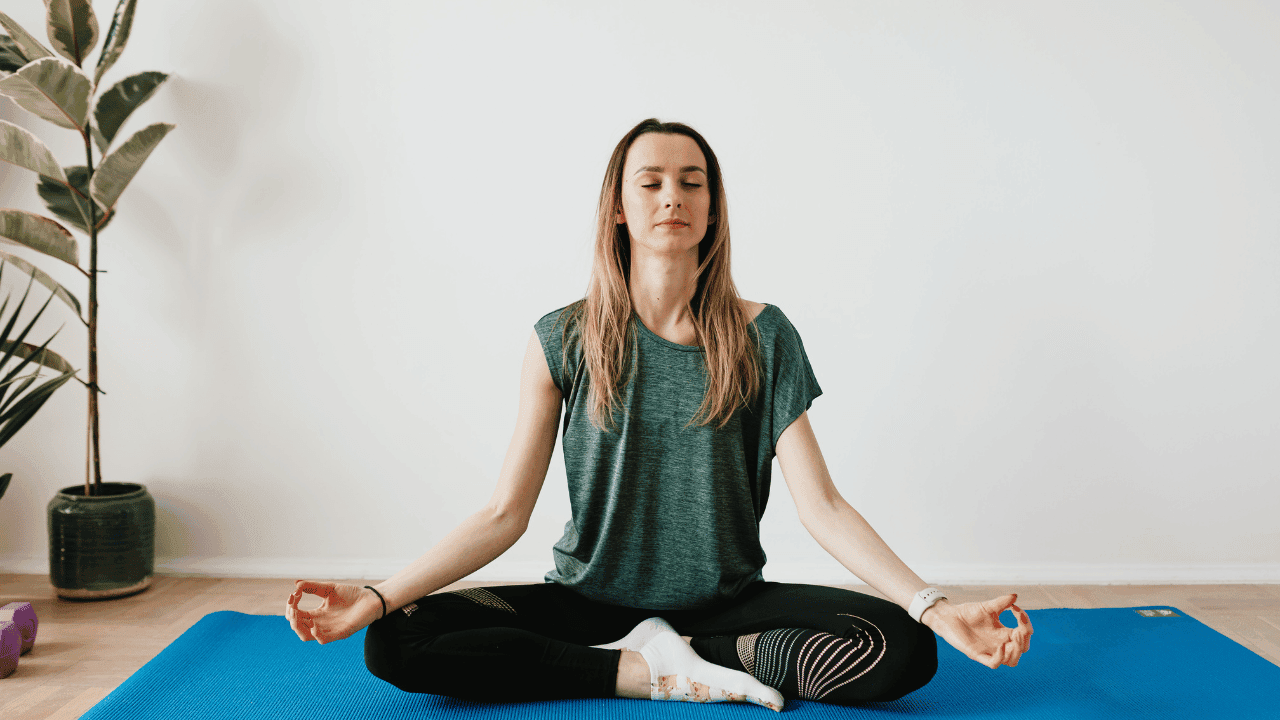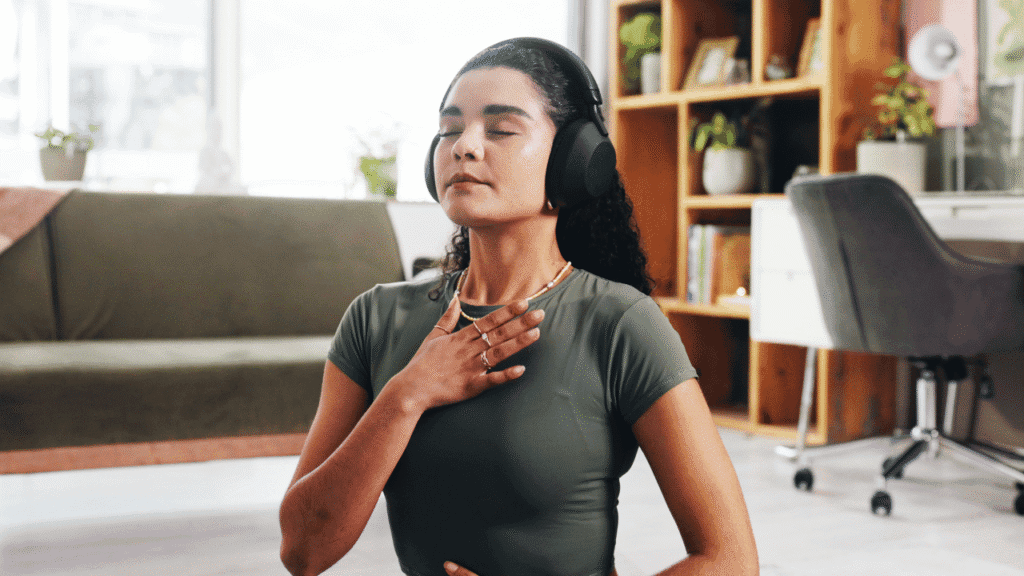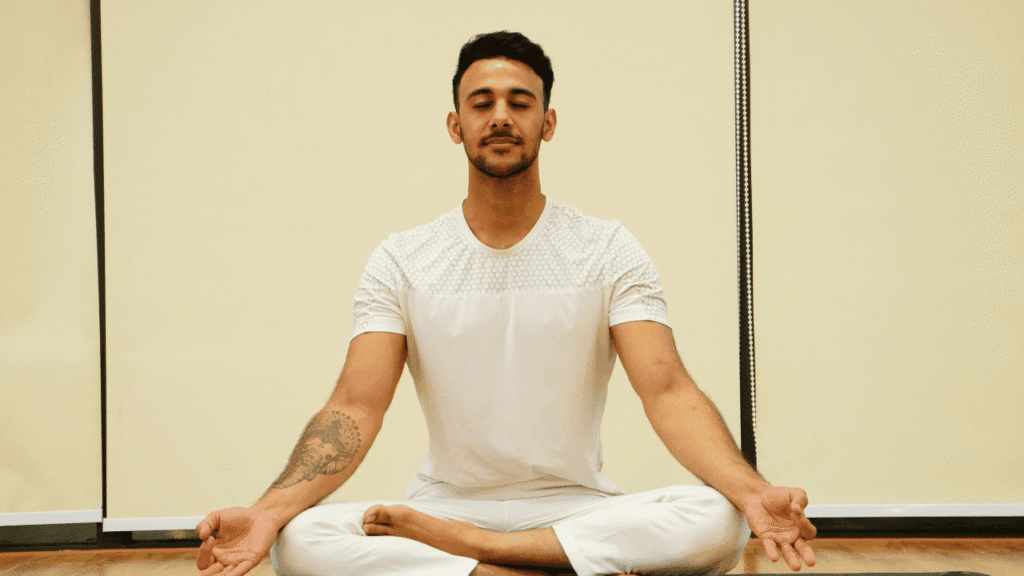Breathing Meditation Techniques: Calm Your Mind & Reduce Stress

Turn ordinary air into a practical tool that helps you steady attention and ease stress in real time.
Breathing Meditation Techniques, Simple methods can slow a racing mind. Try lengthening your exhales (inhale 3, exhale 6) or count five deep cycles—inhale through the nose, exhale through the mouth, count 1 to 5. These brief practices fit busy lives and need no gear.
Box breathing (4-4-4-4) steadies focus. Alternate nostril breathing balances alertness and calm. Even a 60-second reset — inhale 3, hold 2, exhale 4 — can shift your state when pressure spikes.
In this guide you’ll find clear steps, posture tips, and ways to use each method at work, before sleep, or on the go. Beginners can start with one minute and feel a real change. Try a few variations to see what suits your mind and body.
Key Takeaways
- Short breath-based practices reduce stress and sharpen focus.
- Counting and equal-length patterns make it easy to follow.
- One minute of focused breath can change your state quickly.
- Try varied methods—box or alternate nostril—to find what fits.
- Use these exercises at work, before sleep, or during spikes of anxiety.
What Are Breathing Meditation Techniques and Why They Work Right Now
A few intentional cycles can shift a tense body and sharpen the mind. Breathwork meditation pairs deliberate changes to breathing with present-moment awareness of bodily sensations.
How breathwork differs: traditional meditation often watches the natural breath. A breathing technique, by contrast, alters inhale and exhale patterns to shape your state with mindful attention.
Breathwork vs. meditation: the role of mindful attention
Both use mindfulness to bring attention back when thoughts drift. The active pattern gives people a direct anchor. That anchor makes it easier to tame racing thoughts and steady awareness.
How manipulating the breath influences heart rate and stress responses
Changing inhale/exhale ratios affects heart rate and the stress response. Extended exhales slow the heart and lower tension. Research links these exercises to better sleep, mood, and increased heart rate variability — markers of resilience and overall health.
- Use short, guided sessions to improve focus and build skill.
- Pick a level that feels safe and supportive for your life.
- Progress from brief resets to longer self-directed practice.
How to Start: A Simple Mindful Breathing Setup
Begin by settling into a comfortable seat and letting the body soften. Sit upright but relaxed, hands resting where they feel natural. Close eyes if that helps you relax, or keep them gently open.
Start with a short centering: inhale through the nose for 3 seconds, hold 2 seconds, then exhale through the mouth for 4 seconds. Let the breath return to its natural rhythm and notice the sensations that follow.
Anchor attention to the felt breath—perhaps at the nostrils, chest, or belly. If the mind drifts, name the experience (for example, “thinking”) and gently return attention to the breath. This gentle return is the core of any meditation practice.
- Choose a quiet place and sit on a chair or cushion with a hand on the belly if that helps you sense movement.
- Scan the body for tension; soften the jaw and shoulders so breathing can flow with less effort.
- Start with 60 seconds or up to 5 minutes; set a timer to avoid watching the clock.
At the end, notice how your state has shifted—more clarity, calm, or space—and carry that steadiness into the next moments. For a guided intro, see our first-time meditation guide.
Breathing Meditation Techniques
A handful of clear counts can turn scattered attention into steady focus.
Counting breaths: Count 1 on the inhale through the nose and 2 on the exhale through the mouth. Repeat up to five slow cycles to gather your attention breath and quiet the mind.
Extended exhale: Inhale for 3, exhale for 6. You can shorten to 2-4 or lengthen to 4-8 seconds to slow heart rate and racing thought.
- Diaphragmatic (belly) breathing: Place one hand on the stomach. Feel the belly expand on inhale and soften on exhale to ground the body and ease anxiety.
- Box pattern: Inhale 4, hold 4, exhale 4, hold 4. Picture a square to steady attention and build focus in high-demand moments.
- 4-7-8: Inhale 4, hold 7, exhale 8. Repeat several rounds to unwind and prepare for sleep.
- Alternate nostril: Sit upright. Close one nostril with your thumb, inhale the other, switch and exhale. Cycle left-right to balance calm and clarity.
Keep it flexible. Shorten counts if seconds feel long. Choose a quiet place and one method per session, or blend two (for example, counting to center, then box breathing to sharpen focus). For guided practice, try this simple resource: ways to practice breath-focused meditation.
Breathing Meditation Techniques Benefits Backed by Research and Practice
Research and practice show short breath-based routines deliver measurable benefits for body and mind.
Reduce stress, anxiety, and symptoms of depression. Short sessions help shift people from reactivity to steadiness, easing stress and lowering reported symptoms of depression and anxiety.
Improve focus, memory, and creativity during the day. Many report clearer thinking, better task switching, and bursts of creativity after brief practice. These gains make it easier to improve focus at work or school.
- Support sleep and deepen relaxation. Slower exhales and belly patterns quiet the mind and prepare the body for rest.
- Influence heart rate variability and mood regulation. Regular practice is linked to higher heart rate variability, a marker of resilience and calm.
- Potential support for respiratory and cardiovascular health. Alongside medical care, people report symptom relief for asthma and COPD and reductions in high blood pressure.
“Even brief sessions can create shifts you feel in body and mind—your breath becomes a lever to reset and restore balance.”
Practical note: Use accessible methods like 4-7-8, box breathing, or alternate nostril to target specific needs. For more on different practices, see different practices.
Breathing Meditation Techniques Choose the Right Technique for Your Moment
Pick a clear breathing pattern that matches the mood you’re in. Choosing the right approach helps shift your state fast and with little disruption to the day.
Need focus for work or study? Try box breathing
Box breathing uses equal counts: inhale 4, hold 4, exhale 4, hold 4. Short rounds settle the mind and sharpen focus quickly.
Feeling anxious? Use belly breathing or extended exhales
Lengthen the exhale (for example, 3–6) or place a hand on the belly to feel diaphragmatic movement.
These patterns signal safety to the body and can help relieve stress anxiety sensations within a minute or two.
Trouble sleeping? Practice 4-7-8 or gentle counting breaths
Try 4-7-8 or five slow, gentle cycles to shift toward rest. Counting calms racing thought and eases the mind before bed.
Feeling overwhelmed? Use alternate nostril breathing
Alternate nostril (Nadi Shodhana) balances energy and restores clarity one cycle at a time. Adjust counts to comfort.
- Match the technique to your goal: energy, focus, or calm.
- Keep sessions short—60–120 seconds can change your state during a busy day.
- Let comfort lead; shorten counts if a pattern feels strained.
- Track what helps by noting your state before and after each practice.
Step-by-Step Mini Practices You Can Do Anywhere
Quick mini practices fit into a busy day and reset your state in under two minutes. These short routines use clear counts and simple body cues so you can use them in any place.
Sixty-second reset: inhale 3, hold 2, exhale 4
How to do it: Sit or stand with a relaxed but upright spine. Inhale for 3 seconds, hold 2, then exhale for 4. Repeat five to eight cycles.
Keep attention on the felt breath at the nostrils or belly. Use a hand lightly on the belly for feedback if breaths feel shallow.
Two-minute body scan with attention to the breath
Close eyes if you like and sweep attention from the crown to the toes. Notice posture, contact points, and areas of tension.
On each exhale, soften tight spots and return to the attention breath when the mind wanders. You can add a soft hum on the exhale to extend each breath and add a calming sound.
- Use these short exercises between meetings, before a call, or while waiting in line.
- Mark time with your watch or phone haptic cues so you can keep eyes relaxed and inward.
- Repeat during the day—small, consistent practice builds reliable calm and clarity.
Build a Sustainable Mindfulness Practice
A short, regular practice each day makes calm easier to access when life speeds up. Start small and treat consistency as the goal, not duration.
Practice every day: short sessions add up
Begin with one to five minutes each day. Tiny slices of time create momentum and shape how your mind reacts to stress.
Mark a place and a time—morning for focus, evening for sleep support. Over weeks you’ll notice steadier attention and better mood.
Use guidance: apps, audio, or a certified practitioner
Guided content can speed learning. Try apps or audio tracks on major platforms to follow structured lessons.
For tailored instruction, consult a certified practitioner who can adapt exercises to your health and life needs.
Troubleshooting: when attention slips or anxiety rises
When thoughts surge, normalize it—gently return awareness to the breath or body without judgment.
If focus causes anxiety, shorten counts, switch to belly breathing, or use a grounding body scan until you feel safe.
- Keep sessions short: 1–5 minutes daily builds a lasting meditation practice.
- Protect your place: a small corner signals safety and supports habit formation.
- Track time and goals: align practice with sleep, health, or work priorities and adjust monthly.
“Patience and steady awareness shape real change—consistency matters more than intensity.”
Conclusion
Make these short practices your go-to reset when pressure builds or focus fades. Use clear patterns like counting breaths, 4-7-8, box breathing, diaphragmatic work, or alternate nostril to ease stress and invite relaxation.
Breathing Meditation Techniques, Try a quick protocol—inhale 3, hold 2, exhale 4—and notice body and mind shift in seconds. Place a hand on the belly if it helps and use a soft sound or gentle counts to cue rhythm.
After each session, return to your natural breath and take a brief check-in. Repeat and refine a single breathing technique you trust. Over time these simple exercises can help relieve symptoms, improve sleep, and steady your state with steady practice and kind awareness.
















